EDIT: Sorry for misunderstanding your question yesterday, so here is your full-colored version :P
The basic idea is almost the same as MATLAB: Combine Two Grayscale Images With Different Alpha, but in your case some more maneuvers are needed to get the right stuff.
First, recreate your well-described situation with the provided samples
% load foreground image, and scale to [-50, 300]
Foreground = imread('500x_54.jpg');
figure(1)
imshow(Foreground)
Foreground = im2double(Foreground)*350-50;
% load background image
Background = im2double(imread('2-effect1-500x225.jpg'));
figure(2)
imshow(Background)
Then make an alpha channel from scratch. Note that I'm not using imagesc but writing a plain double array. This is indeed an alpha channel! Doesn't need so much mysteries.
% build alpha layer for Foreground
alpha = bsxfun(@times, ones(size(Foreground,1), size(Foreground,2)), .6);
alpha(:,[1:53,149:203,290:352,447:end])=0;
alpha([1:58,170:end],:)=0;
figure(3)
imshow(alpha)
Before blending, I want to scale the foregrond "back" into [0,1]. Since the background image is freshly loaded from a regular picture, it doesn't need normalizing; only the foreground ranging from -50 to 300 does.
The problem is sometimes you have crazy data like -100 or 1000. I don't know how you want to interpret them. If you take [-50. 300] as the regular, typical, should-be range, then how do you map -100 or 1000 into the color level?
There are 2 options / methods to handle this condition: 1) Use [-100, 1000] as a new scale. So -100 will be pure black and 1000 pure color; 2) Keep using [-50, 300] as the scale range, so all stuff out of this range will be mapped (coerced) to the nearest border.
Here I choose the first one, with an adaptive mechanism that limits the range at least [-50, 300]. So if your data go like [-10,200], you still get the scale [-50, 300]. I think this makes more sense.
% find a scale dynamically with some limit
Foreground_min = min( min(Foreground(:)), -50 );
Foreground_max = max( max(Foreground(:)), 300 );
The blending procedure is almost the same as that post. But you are using RGB images, so you'll need to add the numbers for all of the 3 color layers; bsxfun is used to replace the slower + and .* operations.
% overlay the image by blending
Background_blending = bsxfun(@times, Background, bsxfun(@minus,1,alpha));
% Background_blending = Background.*repmat((1-alpha), 1, 1, 3);
Foreground_blending = bsxfun( @times, bsxfun( @rdivide, ...
bsxfun(@minus, Foreground, Foreground_min), ...
Foreground_max-Foreground_min ), alpha );
% Foreground_blending = (Foreground-Foreground_min) / ...
% (Foreground_max-Foreground_min).*repmat(alpha, 1, 1, 3);
% out = bsxfun(@plus, Background_blending, Foreground_blending);
out = Background_blending + Foreground_blending;
figure(4)
imshow(out)
The commented lines except the first one are "regular" assigning commands without using bsxfun, but do the same job, and are easier to understand :)
Result



